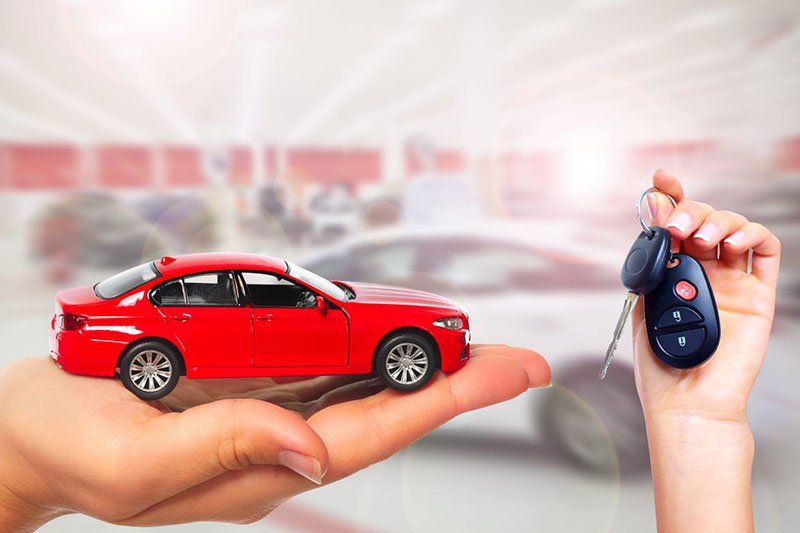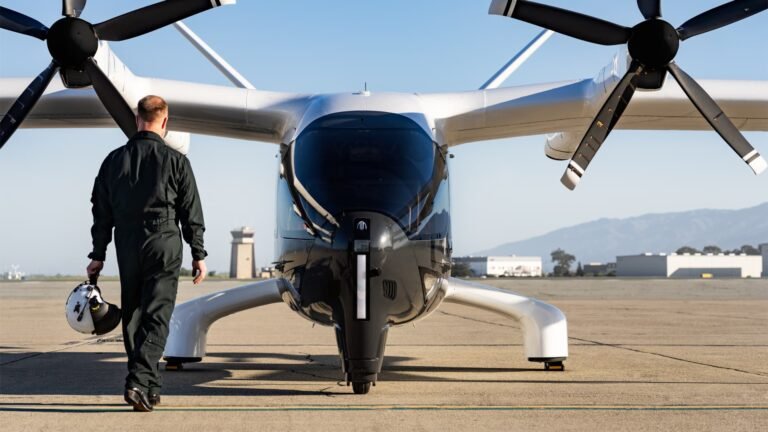When Texans go shopping for a new or used vehicle, one of the most critical concerns is the interest rate they’ll pay on a car loan. Interest affects your monthly payment and the overall cost of the vehicle, so knowing the average rate and how yours might compare is essential. Below is an in-depth look at:
- Current average interest rates in Texas
- National averages and how Texas compares
- Key factors influencing your interest rate
- Real examples from Texas lenders
- Tips to help secure the best possible rate
Let’s dive in.
1. Average Auto Loan Rates in Texas
Based on recent data, here’s what borrowers in Texas are seeing in terms of auto loan interest rates:
- According to Texas Tech Federal Credit Union, the average auto loan rate in Texas hovers around 5.27% APR.
- The legal maximum effective rate under Texas law (when add-on rates are converted to equivalent APR) ranges from as low as 18% up to around 26–27%, depending on the vehicle’s age and loan term.
While 5.27% is the average for borrowers in good standing, used vehicles, subprime borrowers, or longer loan terms can push effective rates much higher (up to the legal maximums).
2. Texas vs. National Car Loan Interest Rates
To put the Texas numbers in context, let’s look at national averages:
- Bankrate reports that the national average for a 60-month new car loan is about 7.19% APR, with 48-month new car loans averaging 7.06%, and used car loans ranging from 7.47% to 7.64%, depending on the term.
- Experian data indicates that average new-car loan rates are around 6.73% APR, while used-car loan rates average 11.87% APR, as of early 2025.
- Edmunds trends put average new car APRs in some states (including Texas) between 8% and 9%, with used car APRs generally in the 11% to 12% range.
Summary Comparison
| Category | Texas (approx.) | U.S. Average |
|---|---|---|
| New Car Loans | ~5.3% APR | ~7% APR (Bankrate) |
| Used Car Loans | Higher, up to 11–12% for some borrowers | ~7.5–12% APR (varies by credit) |
| Max Legal Rate TX | Up to 26–27% APR | — |
Bottom Line: Texas borrowers with strong credit often get rates below the national averages—especially for new vehicles. But borrowers with weaker credit or for older used vehicles may face much higher rates, approaching state-allowed maxima.
3. Real-World Examples from Texas Lenders
Let’s examine some sample rates from actual credit unions and banks in Texas:
Texas Bridge Credit Union
- New Auto (36–60 months): rates starting around 5.19% APR for top-tier borrowers (A+ credit), rising to 16–17% APR for lower tiers.
- Used Auto (2021–2022, up to 72 months): rates start around 5.99% APR for best credit, up to 16.85% APR for lower credit tiers.
Greater Texas Credit Union
- New Vehicle (2023–2025 models): rates as low as 5.51% APR for shorter terms, extending up to 6.79% APR for longer terms (84 months).
- Older used vehicles (2015–2018): rates as low as 6.47% APR to 6.95% APR, depending on term length.
Houston Federal Credit Union
- New Auto (Up to 36 months): as low as 4.50% APR for excellent credit.
- Used Auto (Up to 36 months): also as low as 4.50% APR.
- Longer Used Terms (61–72 months): rates up to 6.50–7.00% APR.
Texas Trust Credit Union
- New Vehicles:
- 36 months: as low as 5.49% APR
- 48 months: 5.84% APR
- 66 months: 5.94% APR
Bank of Texas
- New Auto Loan
- 36 months: 5.94% APR
- 48 months: 5.94% APR
- 60 months: 5.94% APR
- 72 months: 6.24% APR
Observations
- Most well-qualified borrowers (especially via credit unions) can secure rates between 4.5% and 6% APR for new vehicles.
- Longer loan terms, or lower-quality credit, pushes rates upward—sometimes significantly.
- Bank offers tend to be slightly higher than credit unions, but still competitive, especially for shorter terms.
4. What Influences Auto Loan Interest Rates?
Several key factors determine the interest rate you’re offered:
A. Credit Score & Credit History
- The most influential factor. Higher FICO (or Vantage) scores yield better rates. For instance, Bankrate reports:
- Super prime (781–850): ~5.18% new, ~6.82% used
- Prime (661–780): ~6.70% new, ~9.06% used
- Nonprime (601–660): ~9.83% new, ~13.74% used
- Subprime and deep‐subprime (below 600): from ~13% up to ~21–22% APR.
B. Type of Vehicle
- New vs. used: New car loans almost always have lower rates than used car loans because the collateral (new car) is more reliable and likely retains value longer.
- Age of used vehicle: Older cars may result in shorter loan terms and higher rates.
C. Loan Term
- Shorter terms (e.g. 36–48 months) typically offer lower APRs and less total interest but require higher monthly payments.
- Longer terms (60–84 months) lower monthly payments but increase overall interest paid and can raise risk of being “upside down” (owing more than the car is worth).
D. Down Payment / Loan-to-Value (LTV)
- A larger down payment reduces the financed amount and may secure a better rate.
- High LTV loans (small down payment) can mean higher risk for the lender, raising your rate.
E. Dealer vs. Credit Union or Bank Financing
- Credit unions frequently offer lower rates than dealership financing.
- Dealer financing may come with manufacturer incentives or rebates, so it pays to compare.
F. Economic Factors & Federal Reserve Policy
- Interest rates as set (or influenced) by the Federal Reserve indirectly affect auto loan rates. Recent data shows the Fed kept policy rates steady (4.25–4.50%), which has helped stabilize auto loan rates.
- Market conditions, inflation, and competition also play a role.
G. State Laws & Rate Caps (Texas Specific)
- Texas law caps maximum add-on interest rates based on vehicle class and age. Equivalent APRs can reach 26–27% for older vehicles if financed under Texas seller-financing laws.
5. How to Qualify for a Better Interest Rate in Texas
If you’re shopping for a car loan, here are practical tips to help you get the best rate:
1. Check and Improve Your Credit Score
- Pull your credit report from the three main bureaus (Equifax, TransUnion, Experian) — each consumer can get one free report per year.
- Dispute inaccuracies, pay down credit card debt, make all payments on time.
- Avoid applying for new credit shortly before a loan application.
2. Shop Around
- Compare rates from credit unions, banks, online lenders, and dealerships.
- Pre-approval allows you to compare APR offers without affecting your credit score too much.
3. Consider Shorter Terms
- While bigger loans stretch out payments, shorter terms usually come with lower rates and less total interest.
4. Negotiate Financing Separately from the Car Price
- Focus first on negotiating the car price.
- Then negotiate financing — don’t let dealer financing obscure rate comparisons.
5. Make a Solid Down Payment
- Putting 10–20% down can reduce your APR and prevent being upside-down on your loan.
6. Leverage Relationship Discounts
- Many credit unions or banks offer better rates to existing customers or members.
7. Use Incentives Wisely
- Manufacturer or dealer financing deals (e.g. 0% for 36 months) are often valuable. But they may require rigid credit or quick pay‐off. Factor in rebates and compare total cost.
8. Watch for Add-on Fees or Hidden Costs
- Be sure the quoted rate reflects APR including all required fees—doc fees, processing fees, etc.—for a fair comparison.
6. Sample Scenario: How Much Does Interest Cost?
Let’s illustrate with a hypothetical example:
- Vehicle price: $30,000
- Down payment: $5,000
- Loan amount: $25,000
Option A: 5.5% APR for 60 months
- Monthly payment ≈ $478
- Total interest paid ≈ $3,680
Option B: 11% APR (used car or weaker credit) for 72 months
- Monthly payment ≈ $464
- Total interest paid ≈ $8,908
Conclusion: Even though the monthly payment is similar, the total cost difference is massive—over $5,200 more in interest in Option B. This underscores the importance of securing a low APR.
7. Final Thoughts
- In Texas, excellent-credit borrowers can often secure new-car loan rates in the 4–6% APR range—below national averages.
- Nationwide averages currently sit in the 7–11% range, depending on loan type and borrower credit quality.
- Many real-world offerings from Texas-based lenders confirm that credit unions tend to offer the most competitive rates.
- To get the best rate, focus on credit quality, shopping around, loan term, and loan structure.
TL;DR (Summary)
- Typical new-car APR in Texas for good credit: ~5–6%
- National average APR: ~7–8% for new, ~10–12% for used
- High-risk/used loans in Texas can approach 20–27%, depending on vehicle age and regulatory caps
- Credit score, vehicle age, term, lender, and down payment are the top determinants of your offered APR
FAQ: Average Car Loan Interest Rates in Texas
What is the average car loan interest rate in Texas?
The average auto loan interest rate in Texas is about 5.27% APR for well-qualified borrowers. However, actual rates vary widely depending on your credit score, loan term, and whether you’re buying new or used.
How does Texas compare to the national average?
Texas borrowers with good credit often get slightly lower rates than the U.S. average. Nationally, new car loans average around 7% APR, while used car loans average 9–12% APR. In Texas, credit unions frequently offer rates closer to 4.5–6% APR for new vehicles.
What are the current interest rates at Texas lenders?
Examples from credit unions and banks in Texas:
- Houston Federal Credit Union: as low as 4.50% APR for new and used cars (short-term).
- Greater Texas Credit Union: 5.51–6.79% APR for new vehicles.
- Bank of Texas: around 5.94–6.24% APR, depending on term.
Do used car loans have higher interest rates?
Yes. Used car loans usually come with higher rates than new car loans. A borrower with strong credit may still qualify for 5–7% APR, but rates for older vehicles or weaker credit can easily climb to 11–12% APR or more.
What factors affect my car loan interest rate in Texas?
Key factors include:
- Credit score – Higher scores = lower APR.
- Loan term – Shorter terms = lower APR.
- New vs. used vehicle – New cars = lower APR.
- Down payment size – Bigger down payment = better APR.
- Lender type – Credit unions usually beat dealership or big bank rates.
What is the highest car loan interest rate allowed in Texas?
Under Texas law, the maximum effective rate (APR equivalent) ranges from about 18% to 26–27%, depending on the age of the vehicle and length of the loan.
Can my credit score really make a big difference?
Yes. For example:
- Excellent credit (781–850): ~5–6% APR on new cars.
- Good credit (661–780): ~7–9% APR.
- Fair/poor credit (below 660): anywhere from 10–22% APR, depending on the lender.
How can I get a better interest rate in Texas?
- Improve your credit score before applying.
- Shop around with credit unions and banks, not just dealerships.
- Choose a shorter loan term.
- Put down a larger down payment.
- Get pre-approved so you can compare offers confidently.
Read More:










